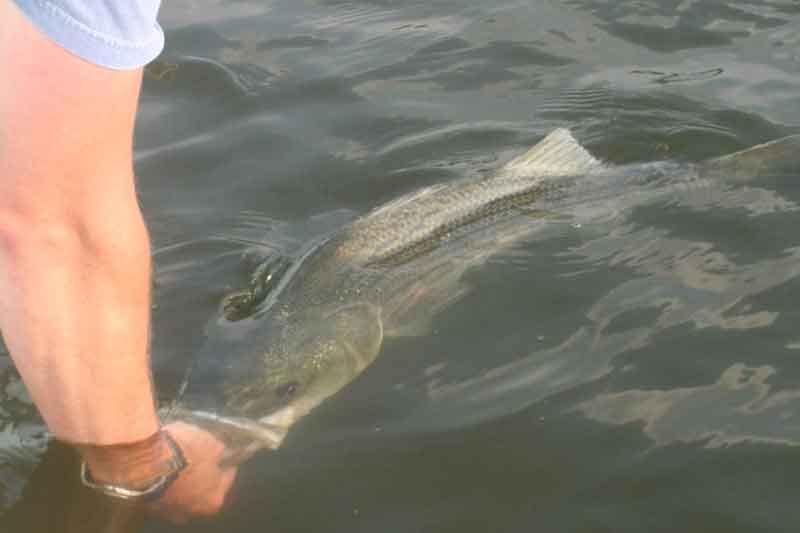As the waters of the Chesapeake Bay warm up and people start fishing for summer stripers, we need to remember that as water temperatures rise above the 70s it reduces a rockfish’s chance of survival. Whether the fish you just reeled in is undersized or you simply feel better about letting it go, always remember:
- Don’t net the fish, and if at all possible, lip it (put your thumb in its mouth and hold it by the lower jaw) and keep it in the water as you remove the hook.
- If you’re lifting it out of the water for a QUICK picture, support the aft end of the fish with your other hand and try not to stress the jaw hinge. Also remember that once air temperatures hit the 90s, fish you plan to release shouldn’t be removed from the water, period.
- Any time you touch a fish it’s imperative you wet your hands, first, or you can inadvertently rub away their protective coat of slime. And never handle a fish with a dry rag, which will remove their slime anywhere it touches (using a soaking wet rag is fine).
- If you’re catching lots of sub-legal fish in search of a keeper, pull up stakes and move on rather than potentially killing fish while you search for a needle in a haystack.
- Leave the ultralight tackle at home, and make sure you can pull those fish in fairly quickly. Extended fight-times do a number on the fish.

And most importantly, forego catch-and-release fishing with bait. Even if you're livelining with circle hooks, you’re bound to harm a lot more fish than you will while using single-hook lures. And yes, using single hooks counts — trebles tend to do plenty of damage. You want to feel really good about yourself? Then go the extra mile, and crimp down the barbs on those hooks, too. The fish will thank you.
For a more in-depth look at safely handling fish you intend to release, see The Dos and Don'ts of Catch and Release Fishing.